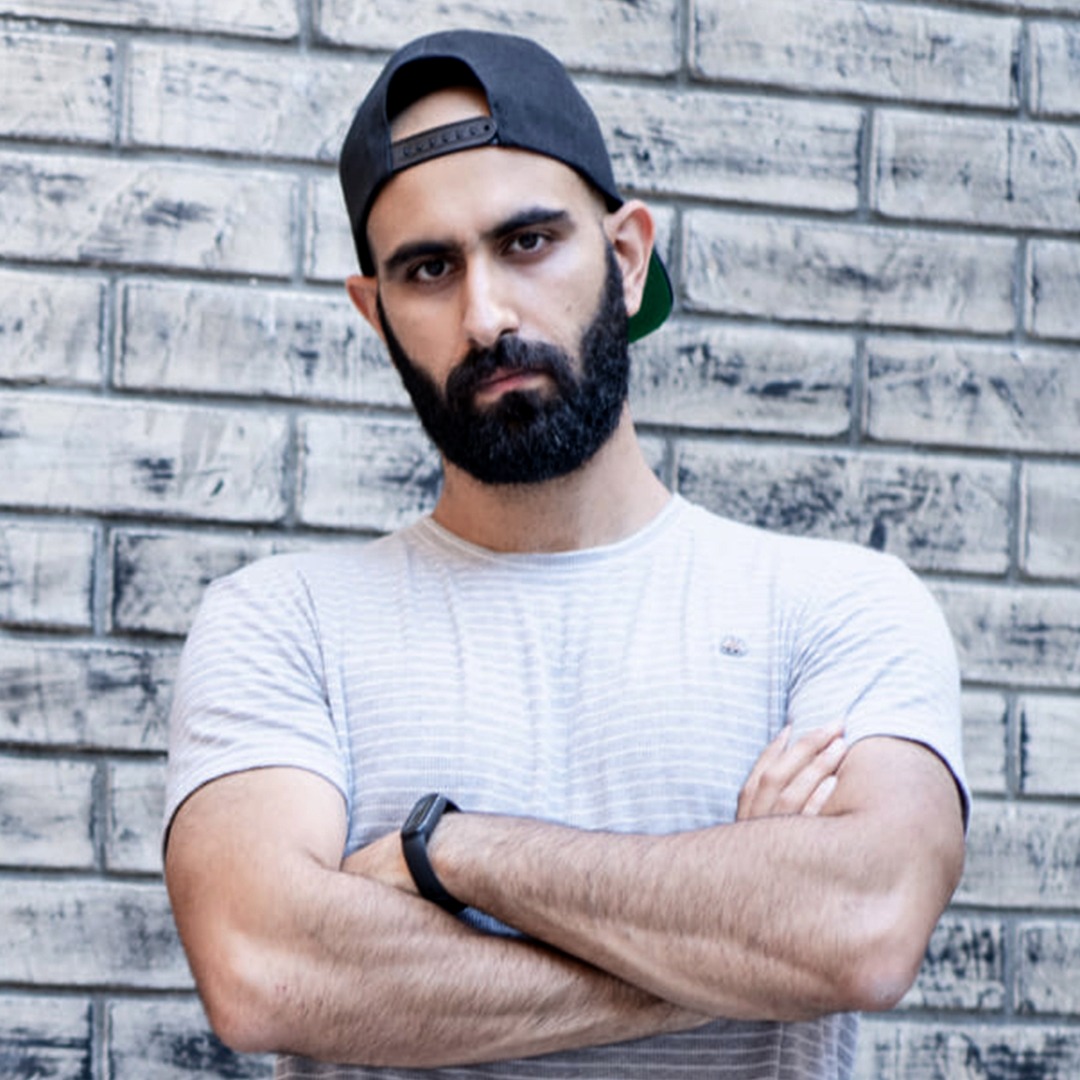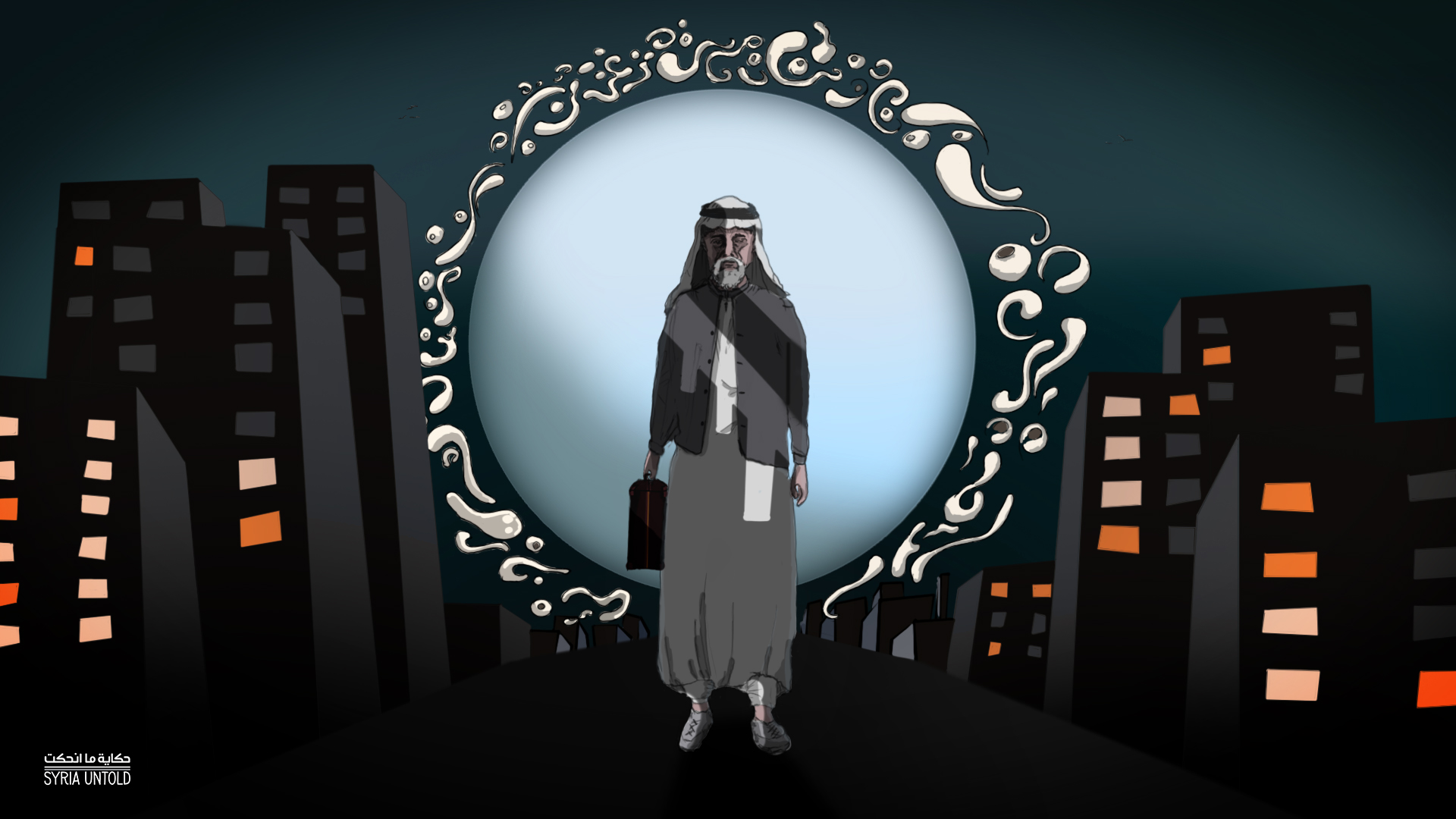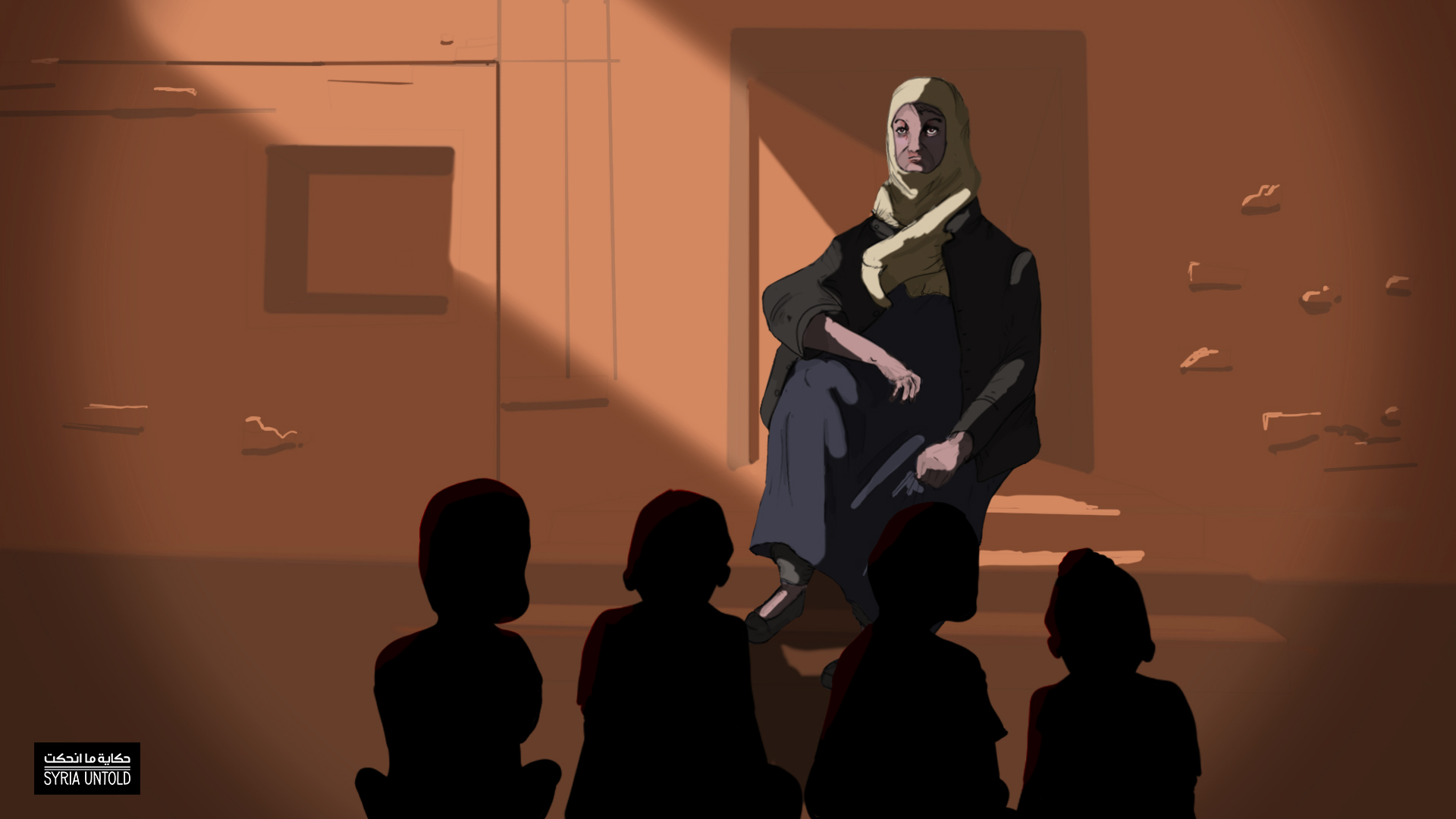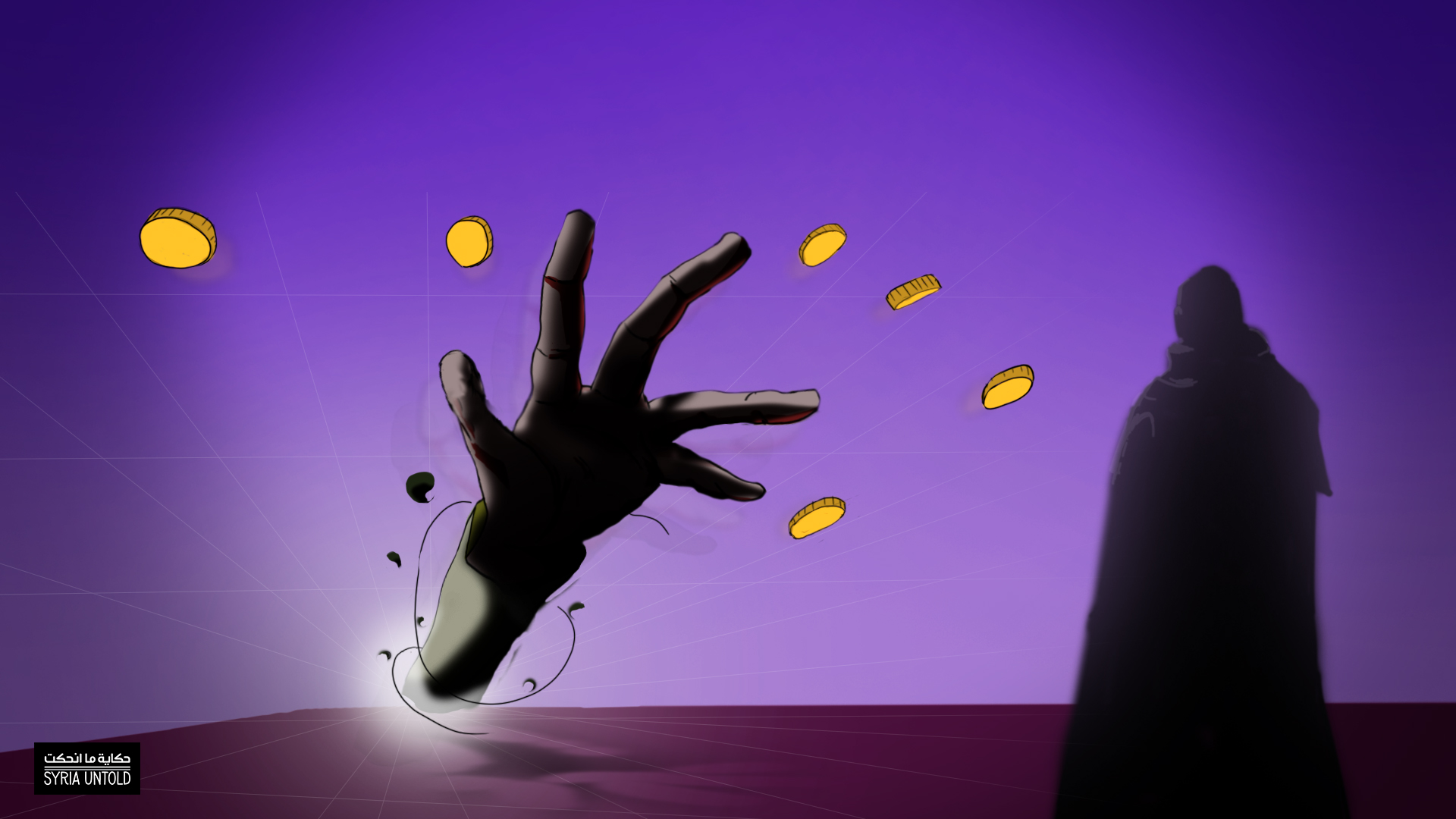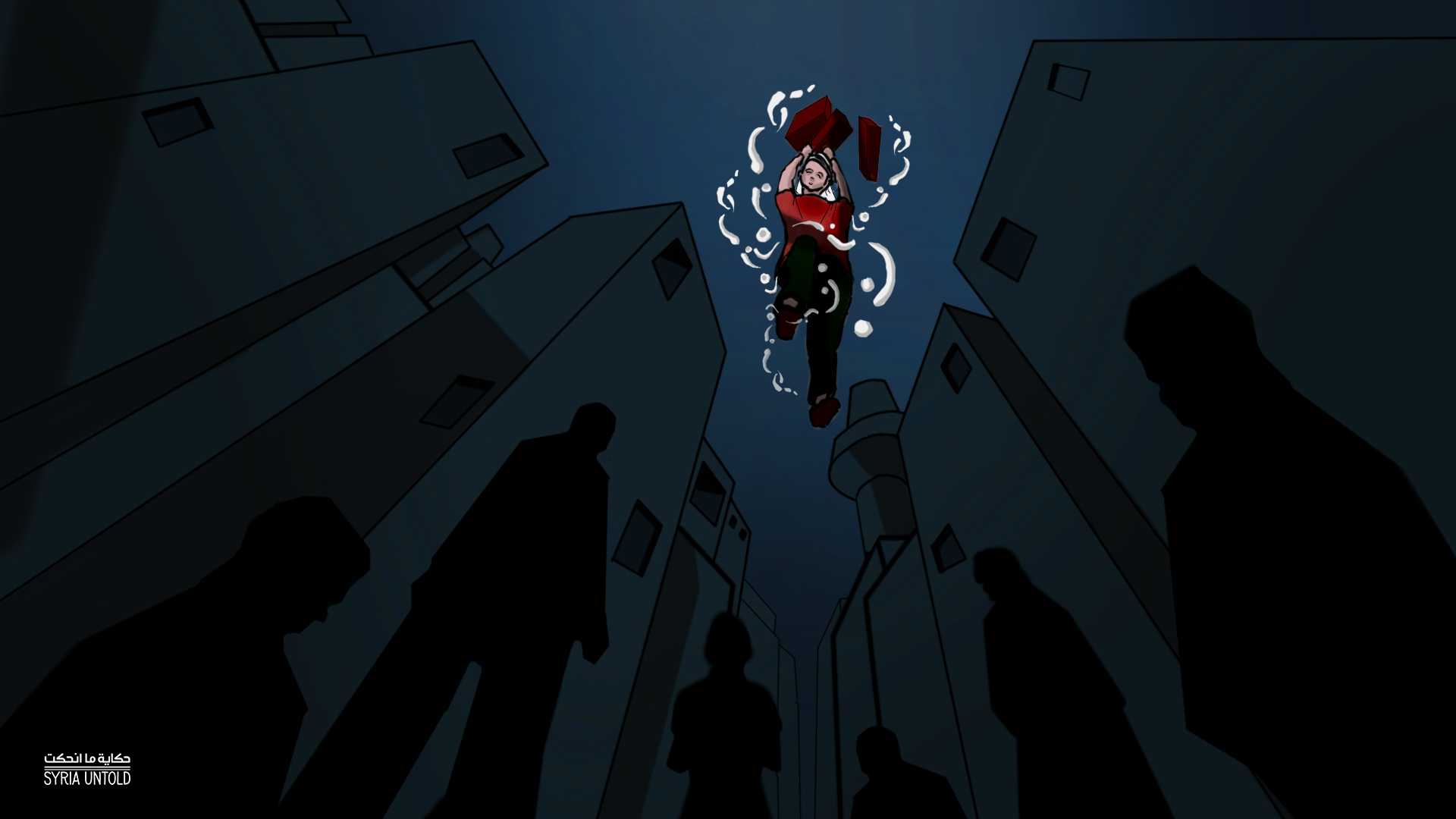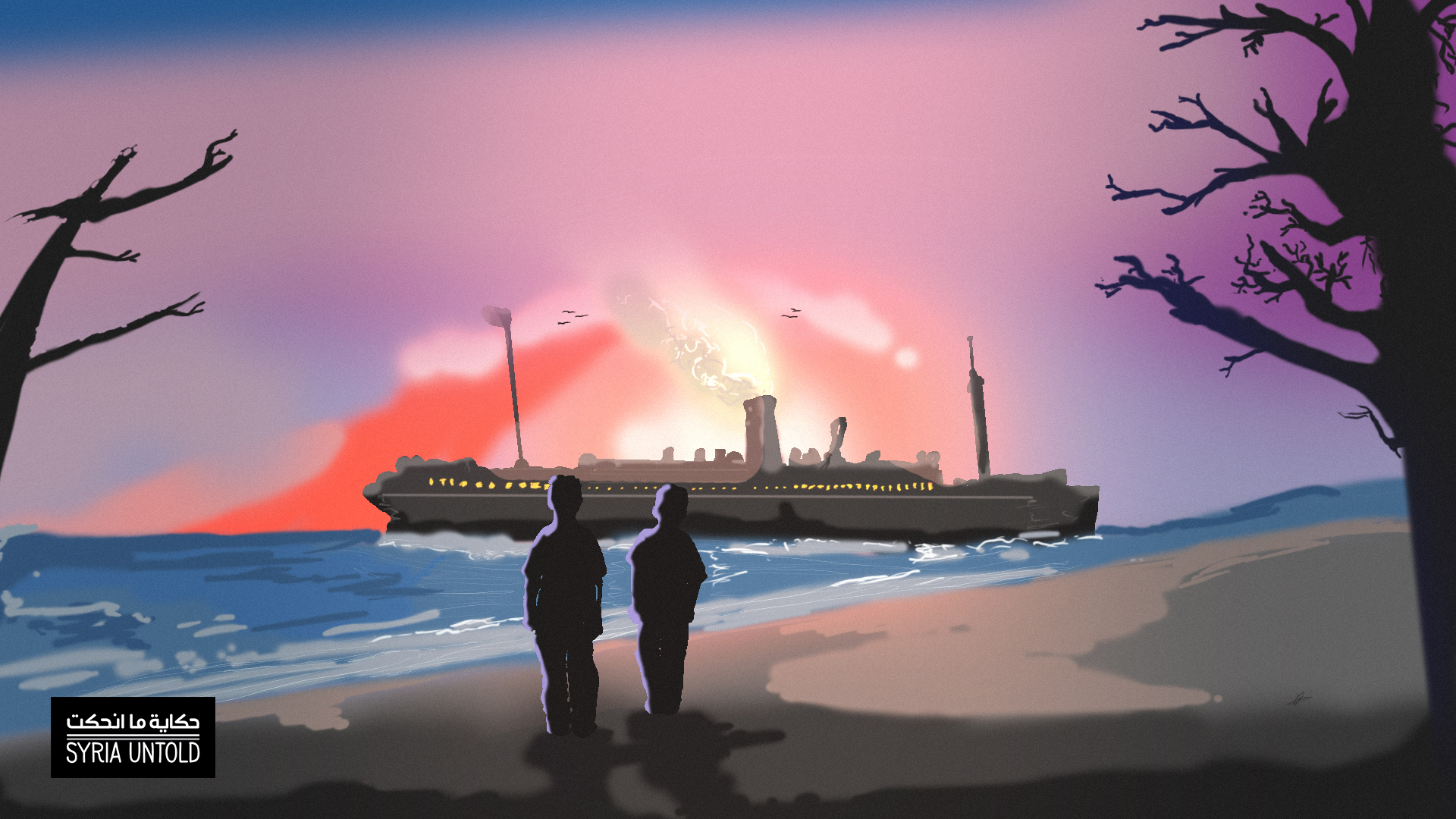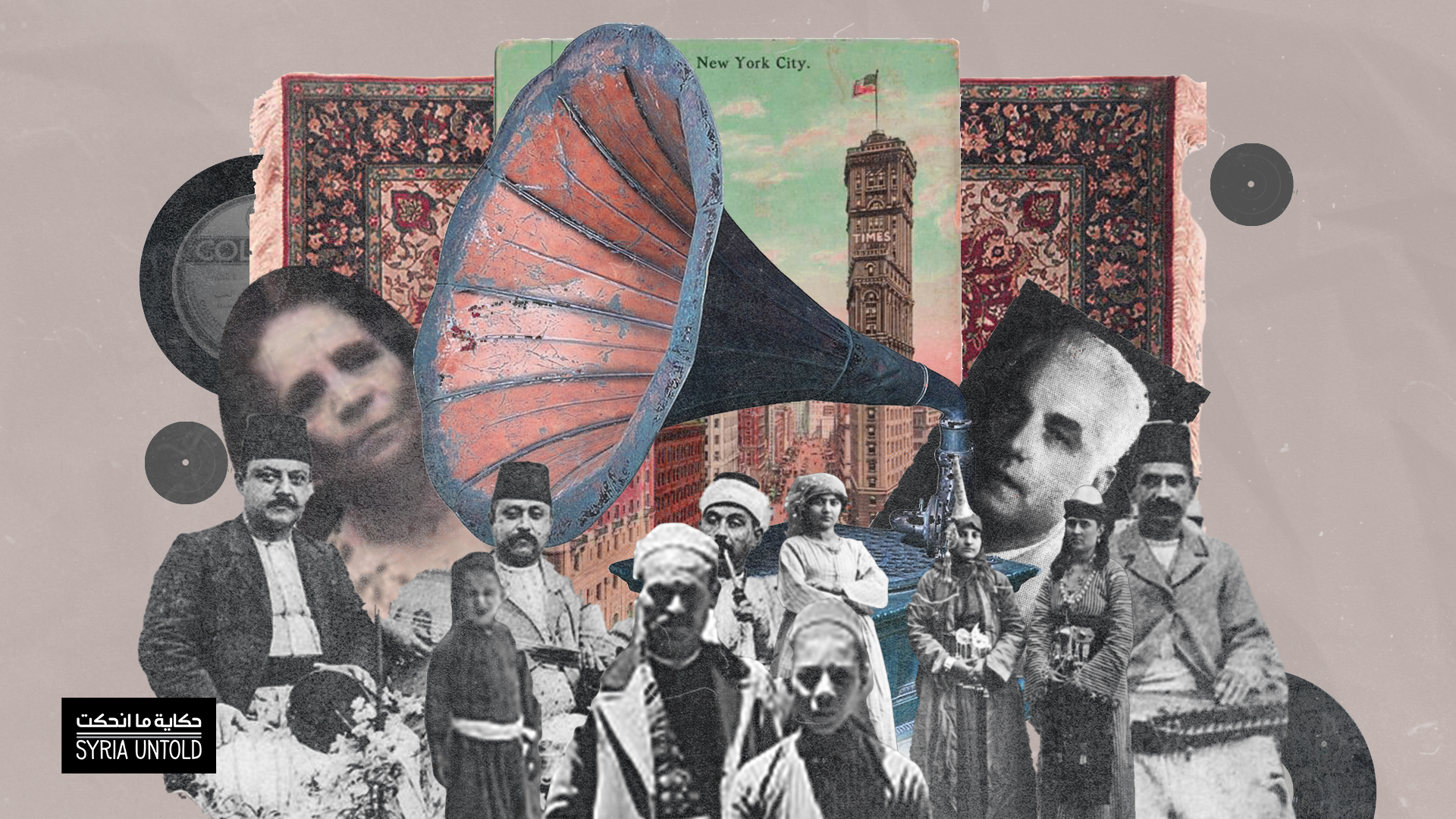SyriaUntold’s illustrator and multimedia editor Rami Khoury revisited editor-in-chief Muhammad Dibo’s introduction from July to our “Little Syrias” series. The series aims to tell the stories of Syrian diaspora communities—“Little Syrias”—around the world. In his original essay, Muhammad writes about these communities that Syrians built in their new countries, as well as the families they left behind. He remembers his grandfather’s brother, who left Syria more than a century ago for the Americas, never to return—that is, except in the stories that his grandmother told them about his life.
Rami’s picture story is below, with snippets from Muhammad’s original written piece.
As children, we’d occupy ourselves with one thing only: asking our grandmother questions over and over again. Where is grandfather’s brother Hassan? Did he come back to Syria? Which country does he live in now? Does he have kids? Aren’t you looking for him? Did he get rich?
She got tired of answering our questions. So we’d hyperactivate our imaginations and try to answer them ourselves. We grabbed an atlas and searched for “America,” as our grandmother pronounced it in her stories. We didn’t know where exactly it was. Canada, the United States, Argentina, Brazil, Chile, Venezuela...for my grandmother, all of them were “America.” When we got tired of searching for this America, we found refuge in our dreams, attempting to satisfy our childish fantasies. What if Hassan’s kids suddenly showed up, and they had lots of money? What if we got a letter that said we were inheriting a fortune from this ancestor of ours? What would we do with it?
I dreamed often that I would suddenly inherit a bunch of money from our long-lost Hassan, and I’d buy anything I ever wanted. But those were just dreams.
Sometimes, one of them would reappear suddenly, 50 years later. They’d be looking for their village or their birthplace. I know the story of one of them, a man who returned to Syria 50 years after emigrating to Brazil. He went home to his village on the Syrian coast, built a house and then died a few months later. Did he return only to die? Our relationships with our homelands and birthplaces are strange. You spend your entire youth fighting to leave, only to return by your own free will to die and be buried there, steeped in nostalgia and memories of childhood.


